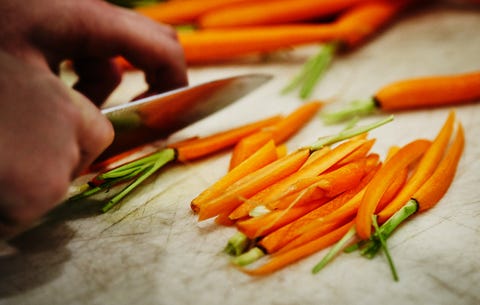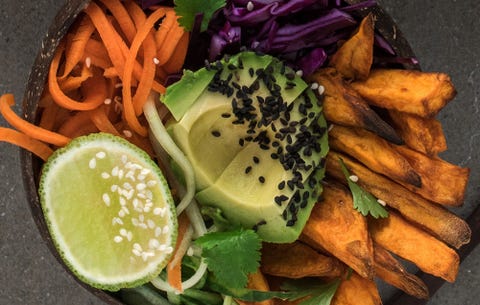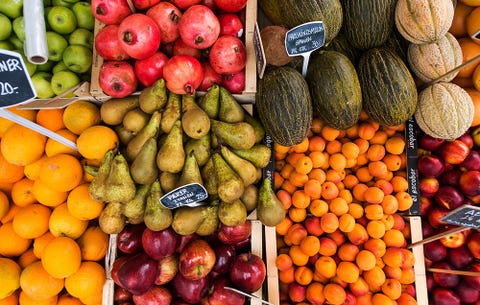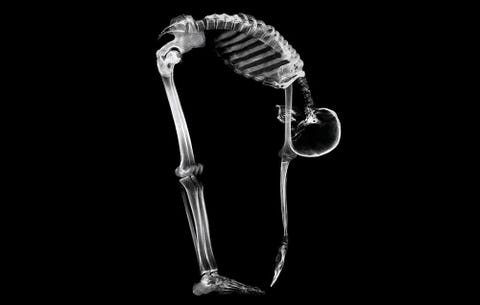how to change age on tiktok
Let's face it: you're not the same person you were in your 20s. As you age, everything from your brain to your metabolism to your penis slows down. Your body is constantly changing over time, so the food you put on your plate should change with it.
With each passing decade, your risk of serious health problems spikes, and your diet plays a huge part in preventing common killers like heart disease, diabetes, and cancer, says Angel Planells, M.S., R.D.N., spokesperson for the Academy of Nutrition and Dietetics.
The good news is, the earlier you focus on building good eating habits, the longer you'll live. Here's exactly how you diet should change during your 20s, 30s, 40s, and 50s.
Your 20s: Create a Solid Foundation

Getty
"The eating habits that men create in their 20s can help them to avoid the weight gain that often comes with a decrease in activity in their 30s," says exercise physiologist Jim White R.D., owner of Jim White Fitness & Nutrition Studios.
In your 20s, you should limit your intake of processed foods, like soda and packaged snacks. Added sugar should be next on the chopping block, says Planells. Men should have no more than 36 grams of added sugar per day, according to the American Heart Association (AHA).
As for what you should put on your plate, aim for balanced meals that include fruits and vegetables, good-for-you carbs like whole grains, and healthy fats like olive oil and avocado. Protein is also a must, says White, since it helps you build lean muscle mass. Aim for 30 grams per meal from a variety of foods, like chicken and fish, eggs, beans, and nuts.
Your last step before you hit 30? Get comfortable in the kitchen and start cooking for yourself, says Planells, so you know exactly what's going in to your meals.
"You may not be a top chef, but this is the time to experiment with meal preparation. Start basic and easy and get comfortable, and you can experiment as you go," he says. Bonus: people who cook at home tend to carry less body fat, according to a study from the U.K. (Looking for tons of delicious and healthy recipes to get you started? Check out the Metashred Diet from Men's Health.)
Related: How Much Fat, Protein, and Carbs Should You Be Eating?
Your 30s: Eat For Your Heart

Unsplash
Life takes a swing at you in your 30s. You're busier and probably less active, which can tank your energy and metabolism, says White, causing you to gain weight more easily. And the more fat you carry, the higher your blood pressure likely gets.
Your task: eat a balanced meal or snack every few hours throughout your day, White suggests. This will ensure your brain has a constant supply of nutrients when you need it. (These energy-boosting foods are a great place to start.)
Since high blood pressure (a reading of 130/80 or higher) is a common precursor to heart disease, the earlier you think about it the better. On top of that, your cholesterol (especially your LDL or "bad" cholesterol) and triglycerides (a type of fat in your blood) should be at normal levels, too, says Planells, so checking in with your doc is a must.
Eating more potassium-rich foods—like leafy greens, bananas, sweet potatoes, and beans—can help, says White. Potassium transports salt out of your body and helps your blood vessels relax, working to lower your blood pressure, says the AHA.
Choosing leaner cuts of meat and eating at least three servings of whole grains per day can help keep these numbers from getting too high as well, says Planells. The fiber, zinc, iron, B vitamins, and vitamin E in whole grain foods like brown rice and oats work together to improve the way your body processes blood sugar, fight obesity, and lower your cholesterol, according to one recent study.
The 5 Best Foods To Fight Heart Disease:
Your 40s: Load Up On Colorful Foods

Unsplash
In addition to heart disease, your risk of diabetes, cancer, and erectile dysfunction only gets higher as you reach your 40s, says Plannells.
White agrees, emphasizing that it's important to make disease prevention a top priority if you haven't already. The best way to do that? Bump your fruit and vegetable intake. Aim for at least three or four servings of vegetables and two or three servings of fruit every day, suggests White.
Downing seven or more servings of fruits and vegetables a day can reduce your risk of death by 42 percent compared to eating less than one serving, research from the U.K. suggests.
It may sound like a lofty task, but even sipping a smoothie every morning can sneak in two or three servings. Dark green, red, and orange vegetables like spinach, peppers, and sweet potatoes are top-notch disease fighters, says White, thanks to their high concentration of antioxidants, like beta-carotene.
Related: 26 Recipes That Will Make You Love Vegetables
Your 50s: Emphasize Nutrients For Your Bones

Getty
As you age, you start to lose bone mass. That can be risky: your bones protect your heart, lungs, and brain from injury. Plus, bone diseases like osteoporosis can increase your risk of painful fractures.
To keep your bones healthy and strong, White recommends eating at least three servings of calcium-rich foods every day, like milk, yogurt, salmon, and leafy greens. When you don't get enough calcium, your bones get weaker and can't grow properly, and since your body can't make calcium on its own, you need to get enough of it through your diet.
Aim for roughly 1,200 milligrams of calcium per day, according to the U.S. National Library of Medicine. Load up on vitamin D, too, since your body can't absorb calcium without it. (There's some debate, however, on how much you should get: While the National Institutes of Health recommends 600 international units (IUs) daily, the American Academy of Orthopaedic Surgeons says most adults need more than 1,000 IUs daily for good bone health.)
Your best bet is to check in with your doc about your vitamin D intake, especially if you're worried about your bone health. While it's hard to get all of your D through food alone, you can find it in some specific sources, like fortified milk, fatty fish, mushrooms, and cheese. If your doc thinks your vitamin D intake is too low, he or she may be able to prescribe a supplement.
Danielle Zickl Senior Editor Danielle Zickl for Runner's World and Bicycling.
This content is created and maintained by a third party, and imported onto this page to help users provide their email addresses. You may be able to find more information about this and similar content at piano.io
how to change age on tiktok
Source: https://www.menshealth.com/nutrition/a19544164/diet-changes-during-aging/
Posted by: mcgilladvid1939.blogspot.com

0 Response to "how to change age on tiktok"
Post a Comment